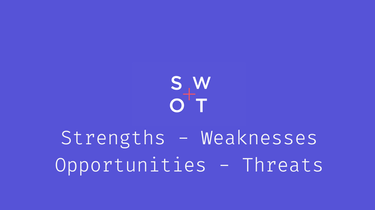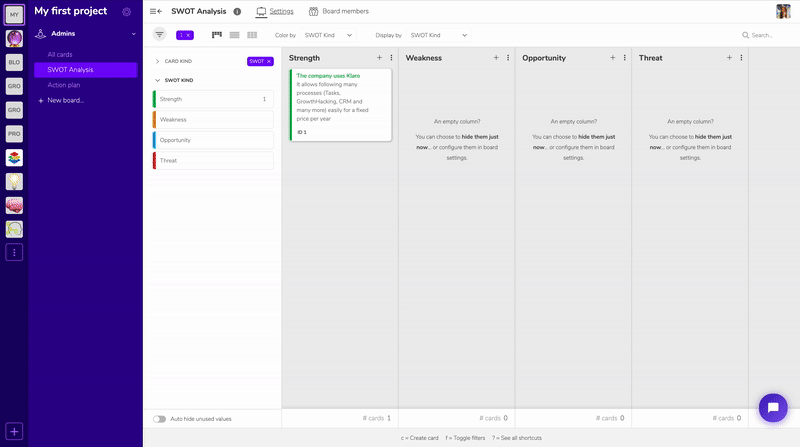Hints & Tutorials
19.10.2020
SWOT Analysis: method and strategy
SWOT analysis is a well known method to study a business and its market. Learn how to apply this analysis and use it to come up with an action plan.

What is SWOT?
SWOT is an acronym signifying Strengths - Weaknesses - Opportunities - Threats. SWOT analysis helps to define the internal strengths and weaknesses of a business, as well as the opportunities and threats of the market in which it operates. It gives an overview of a business and its market and facilitates the creation of an action plan to develop strengths and opportunities, while keeping weaknesses and threats under control.
Who uses SWOT?
Its ease of application and the fact that SWOT has proved useful to so many businesses over the years, makes this a very popular and frequently-used technique.
-
Marketing professionals and departments use SWOT to help define and plan their marketing strategies and communication.
-
Business leaders use SWOT to understand the global situation of the business and its market, to design optimal strategies and to share these strategies with their teams.
How to do SWOT?
Stage 1: Brainstorm
The first stage is brainstorming (individually or as a team) on the current state of the business: "What are the strengths and weaknesses?", "What are the opportunities and threats?" Participants need to think hard to understand the strengths and weaknesses of:
- The product
- The service
- Communications and marketing
- Human resources management
- Financial situation
- Customer feedback
- etc.
This is a non-exhaustive list and the points under consideration during the SWOT analysis have to correspond to your specific business and activity. You can also find inspiration from models like the Marketing Mix (4P, 7P).
Stage 2: Reflect on strategy
The second stage consists of reflecting and researching:
- Marketing, sales
- Competitors
- Social and societal factors
- Politics
- Technology
- etc.
In brief you need to look at everything about your market to determine the opportunities it brings your business, as well as the threats that lie in wait. You can find inspiration from a well-known model - PESTELE - as you work on the outward facing part of your SWOT analysis.
Stage 3: gather your findings
After having researched and gathered information you can input your findings into a Klaro board by using our special SWOT template.

Stage 4: Go further
Once your SWOT board is complete you can use the same project to determine your action plan with the help of preconfigured elements. To find out more click here.
